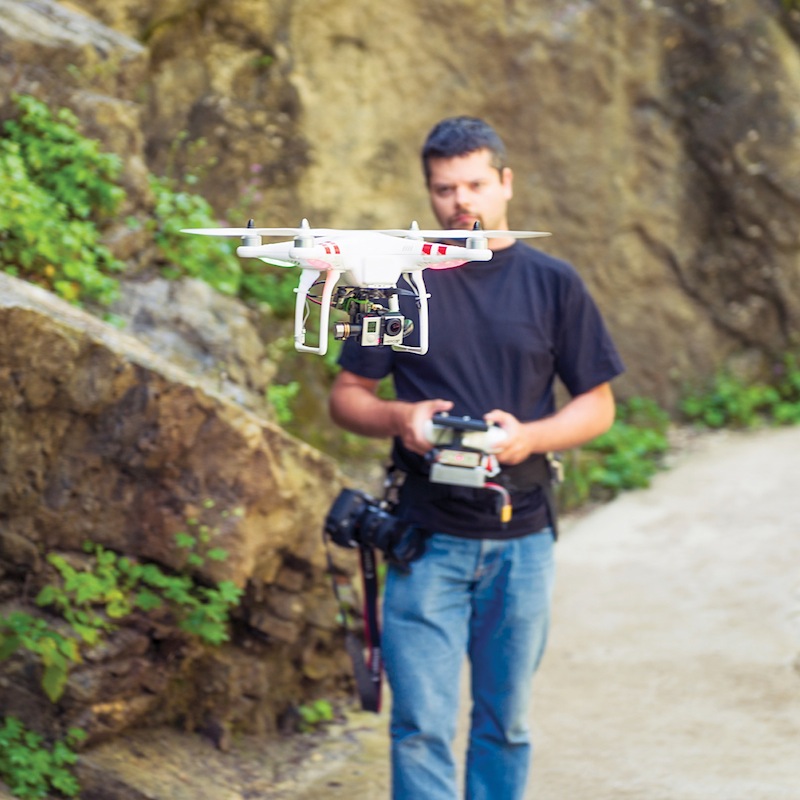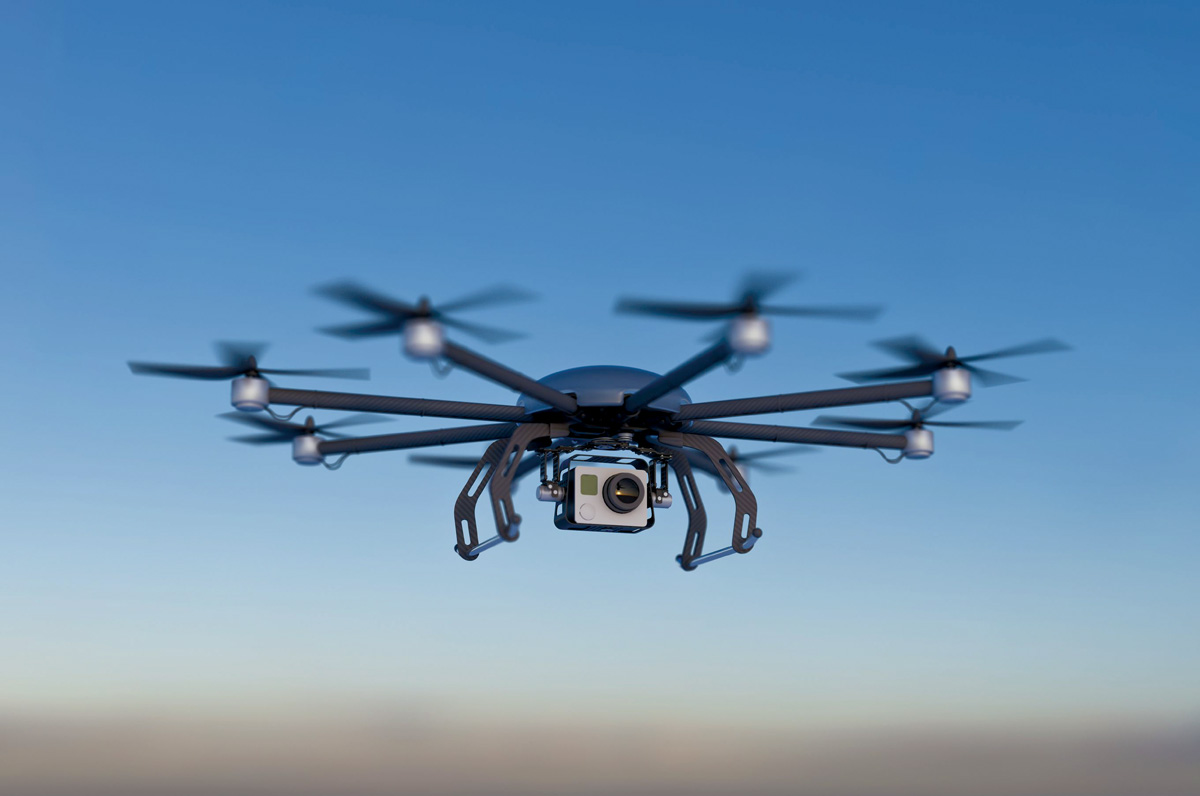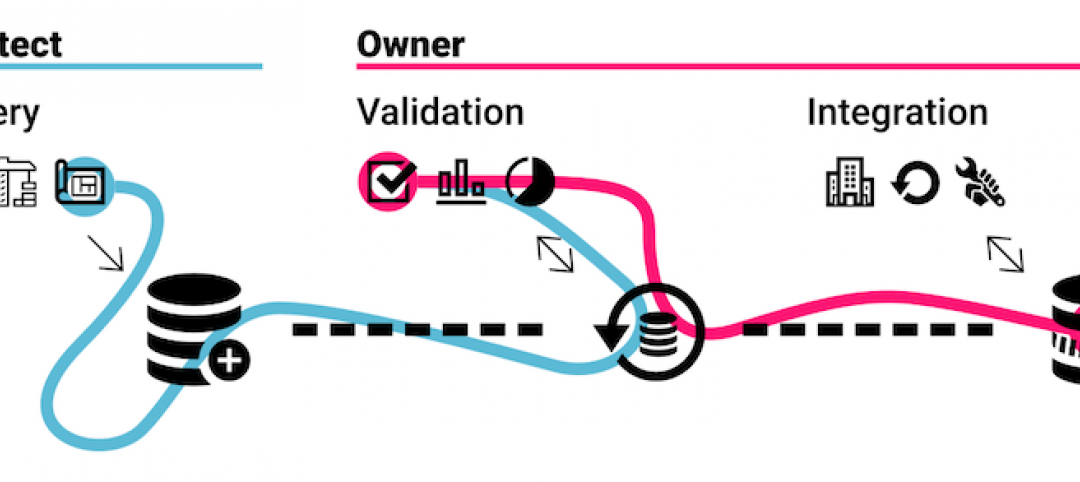The use of drones as construction tools took a big step forward on February 15, when the Federal Aviation Administration issued its Notice of Proposed Rulemaking for Small Unmanned Aircraft, which offers safety rules for drones weighing more than 55 pounds conducting non-recreational operations. And on May 6, FAA announced its Pathfinder Program, where it will work with the market to gather data to make the case for allowing drone flights for expanded commercial operations without permission.
While they wait for rules to be finalized and approved, companies wanting to fly drones are taking advantage of an exemption process that FAA streamlined last year. St. Louis-based design/build contractor Clayco, and Bechtel, North America’s largest civil engineering and construction company, are recent exemptees.
FAA is working with insurance companies to develop coverage and policy standards, says Jay Shelton, Senior Vice President and Leader of Risk Management Practice at Assurance, a Chicago-based insurance brokerage. He knows of only one carrier, Lexington Insurance, that offers a modified aviation policy covering drones.
Both Clayco and Bechtel integrate drones into their execution systems via Skycatch’s cloud-based platform for capturing data using small automonous aerial robots. Skycatch is also partnering with Komatsu, the Japanese construction equipment colossus, which in January unveiled plans to use unmanned aircraft, bulldozers, and excavators to automate early foundation work on construction sites. Komatsu intends to lease at least 200 drones from Skycatch.
FAA has estimated that between 7,500 to 20,000 drones could be permitted to fly legally by 2020. But issues around usage (such as rights of way), liability, and privacy still need to be resolved.
FAA is working with insurance companies to develop coverage and policy standards, says Jay Shelton, Senior Vice President and Leader of Risk Management Practice at Assurance, a Chicago-based insurance brokerage. He knows of only one carrier, Lexington Insurance, that offers a modified aviation policy covering drones.
Shelton believes that drone-related privacy issues in all likelihood will be sorted out by courts to determine, for example, whether an intrusion was accidental or intentional, or whether release forms are required before drones can fly over or photograph buildings or land.
“There are grey areas, but the benefits [of using drones] are unquestionable,” says Steven Lesser, Shareholder in charge of construction at the Fort Lauderdale, Fla.-based law firm Becker & Poliakoff, and Vice Chairman of the American Bar Association’s Forum on Construction Law.
 Photo: Association of Unmanned Vehicles International
Photo: Association of Unmanned Vehicles International
Lesser says AEC firms are eager to fly drones because robots make it easier and safer to access difficult areas like mining pits or rough terrain, at a fraction of what an airplane or helicopter would cost to rent.
“The possibilities are amazing,” says James Brogan, AIA, Director of Firmware Technology for Kohn Pedersen Fox Associates. His firm completed work on an airport in Nanking, China, from which Chinese construction partners sent progress reports in the form of drone-shot videos.
Wiss, Janney, Elstner Associates also is waiting for the FAA to finalize the regs on drone use, says IT Manager Raymond Jaskot. He thinks drones could be useful in high-risk construction environments where safety is problematic. Drones could also aid in measuring and inspecting buildings. Jaskot says WJE has looked into using drones with infrared cameras to detect temperature variations that could be caused by moisture trapped behind a façade.
One drone maker, France-based Sysveo, is working on software that would give drones the capability to include augmented reality 3D images in their videos, so developers could see what a building project might look like well before it exists.
“It’s critical that our technology portfolio stays ahead of the curve,” says J. Brent Williams, President of Burns & McDonnell, which began using drones in 2013, and now owns six. The firm recently entered into a partnership with Yale University to show students how drones and sensors can work in tandem. “We have the ability to switch out sensors on UAVs [unmanned aerial vehicles] from a regular camera to a near-infrared to a four-band multispectral,” says Steve Santovasi, GISP, who manages the firm’s Geospatial Services department. These options “give us the ability to visualize or categorize from bandwidths outside the limits of the human eye,” he says.
Other AEC firms see drones as enhancing their design abilities. “If you have a drone working off of a Revit model, it could show you detail areas and tie that with augmented reality as well as overlay the next construction layer,” states Robert Petty, Associate Partner at ZGF Architects, who owns a couple drones for personal use. Theoretically, he says, a designer armed with that information “could change the design on the spot with 3D printing and relay the information to robotic manufacturing.”
Peter Marchese, a Senior Consultant with Microdesk, has fed a CAD/BIM model into a drone to lay out paint lines for a building. He uses drones for reality capture to create models with Autodesk or Pix4D process imaging software. Drones could aid clash detection, too, Marchese suggests.
Marchese recommends that firms considering using drones should first train their pilots on simulation programs like Real Flight or Phoenix, and then fly the drones with two-man teams. Mark Segal, who owns the aerial photography firm Skypan, says his company always flies drones with a pilot, an assistant, and a spotter.
Segal anticipates “lots of opportunities and purposes” for drones in construction and renovation, including inspecting existing buildings. He notes that there’s been “enormous improvement” in drone stability and sophistication, and cites the new Solo drone from 3D Robotics, outfitted with a GoPro camera that an operator can control from a distance of a half-mile.
Battery technology is a concern, though. Drones use lithium polymer batteries that are sensitive to charging, and can ignite. And smaller prop drones can’t stay airborne for more than 20 minutes, tops.
Segal thinks Tesla Motors’ battery technology—its massive factory in Nevada should be fully operational by 2020—could lead to breakthroughs in battery life for UAVs. For now, he says, battery power is adequate for most AEC firms’ drone uses: “They only need to be in the air for five or six minutes at a time to get what you need.”
Next on the horizon: obstacle detection and avoidance technology, so operators can fly UAVs safely even when they’re out of sight.
MEET DRONE EXPERTS AT BUILDING HEARTLAND
Microdesk’s Peter Marchese and SkyPan’s Mark Segal will speak on “DRONES: How Design, Engineering + Construction Firms—and Their Clients—Can Benefit from Their Use” at BD+C’s Building the Heartland conference, September 1, 2015. More at: www.BuildingChicagoExpo.com.
Related Stories
Sponsored | BD+C University Course | Oct 15, 2021
7 game-changing trends in structural engineering
Here are seven key areas where innovation in structural engineering is driving evolution.
AEC Tech Innovation | Oct 7, 2021
How tech informs design: A conversation with Mancini's Christian Giordano
Mancini's growth strategy includes developing tech tools that help clients appreciate its work.
Digital Twin | May 24, 2021
Digital twin’s value propositions for the built environment, explained
Ernst & Young’s white paper makes its cases for the technology’s myriad benefits.
AEC Tech | Mar 4, 2021
The Weekly show, March 4, 2021: Bringing AI to the masses, and Central Station Memphis hotel
This week on The Weekly show, BD+C editors speak with AEC industry leaders about the award-winning Central Station Memphis hotel reconstruction project, and how Autodesk aims to bring generative design and AI tools to the AEC masses.
AEC Tech | Jan 28, 2021
The Weekly show, Jan 28, 2021: Generative design tools for feasibility studies, and landscape design trends in the built environment
This week on The Weekly show, BD+C editors speak with AEC industry leaders from Studio-MLA and TestFit about landscape design trends in the built environment, and how AEC teams and real estate developers can improve real estate feasibility studies with real-time generative design.
AEC Tech | Nov 12, 2020
The Weekly show: Nvidia's Omniverse, AI for construction scheduling, COVID-19 signage
BD+C editors speak with experts from ALICE Technologies, Build Group, Hastings Architecture, Nvidia, and Woods Bagot on the November 12 episode of "The Weekly." The episode is available for viewing on demand.
Smart Buildings | Oct 26, 2020
World’s first smart building assessment and rating program released
The SPIRE Smart Building Program will help building owners and operators make better investment decisions, improve tenant satisfaction, and increase asset value.
BIM and Information Technology | Oct 8, 2020
4 challenges of realizing BIM's value for an owner
In recent years, we have found our consulting practice engaging more and more with owners that are questioning the value of BIM and how they can make use of potentially data-rich BIM assets.
AEC Tech | Feb 5, 2020
BIM London: A glimpse of BIM discussions across the pond
Digital twin, ISO standards, blockchain, and data were the hot topics at the recent The Digital World: BIM event.
Building Technology | Mar 6, 2019
Australia’s prefab construction sector is trying to break out from its 'getting there' stage
A paper by Deloitte looks back at an origin case study. But the country has yet to develop a fully formed industry.

















